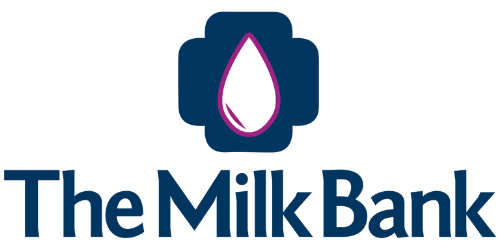The Milk Bank has been dispensing Pasteurized Donor Human Milk to hospitals since 2005, with a 100% fill rate.
We are your partner in public health, offering wrap around services as a continuation of the care you provide to patients and families.
You support fragile babies, let us support you!
How are milk donors screened?
Our donors are healthy, lactating mothers who are screened for medical and lifestyle histories, complete thorough healthcare questionnaire, and receive blood tests for HIV 1 & 2, HTLV 1 & 2, Hepatitis B & C, and Syphilis.
The screening process meets the guidelines set forth by the Human Milk Banking Association of North America (HMBANA). These strict guidelines were developed in consultation with the FDA, CDC and the blood and tissue banking industries.
Is The Milk Bank accredited or inspected?
The Milk Bank adheres to the strict guidelines published by our governing body, HMBANA. These guidelines address three layers of recipient protection: extensive donor screening, milk pasteurization, and microbiology testing. The Milk Bank is accredited annually by HMBANA to ensure adherence to these guidelines and exceeds guidelines in many areas. The Milk Bank is registered with the FDA.
Is the milk pasteurized and cultured?
Yes. Pasteurized Donor Human Milk (PDHM) from The Milk Bank is pasteurized using the Holder Method, a process of heating milk to 62.5 degrees Celsius for 30 minutes and then rapidly cooling it in an automatic pasteurizer. The pasteurization process kills bacteria, while preserving most of the immunologic properties unique to human milk. Macronutrients are largely unchanged by pasteurization.
A random sample from each batch of PDHM is sent to a third-party laboratory for microbiology testing. Only PDHM that shows no growth is approved and available to dispense. All cultures are performed at a CLIA CAP accredited lab.
What steps are taken to insure the safety and security of the milk?
Each bottle is sealed with a tamper-proof seal. All PDHM is shipped to hospitals in new, clean, insulated containers using packing material to minimize the contamination of the outside of the bottles that will be at the bedside of vulnerable infants. Production staff at The Milk Bank pack PDHM using a clean technique. Each container is packed with a dry ice material to ensure PDHM remains frozen. Hospital staff receiving the shipment should inspect the box to make sure the milk arrives completely frozen and the bottle’s tamper seals are in place.
Is the use of PDHM cost-effective?
Yes. Necrotizing enterocolitis (NEC) is a leading cause of infant death impacting thousands of babies every year in the United States. The NICU cost burden of NEC among premature infants is huge. Not to mention the lifelong complications and medical costs that may follow a case of NEC.
Research shows that an exclusive human milk diet offers these infants the most protection. The cost of using banked donor milk to feed premature infants is inconsequential when compared to the savings from NEC prevention. (Arnold, L. J Hum Lact: 18(2), 2002; 172-176.)
A reduction in length of stay, NEC, and sepsis may result in a relative savings of approximately $11 to the NICU or healthcare plan for each $1 spent for PDHM. (Wight, N.E. J Perinatol. 2001; 21:249-254.)







